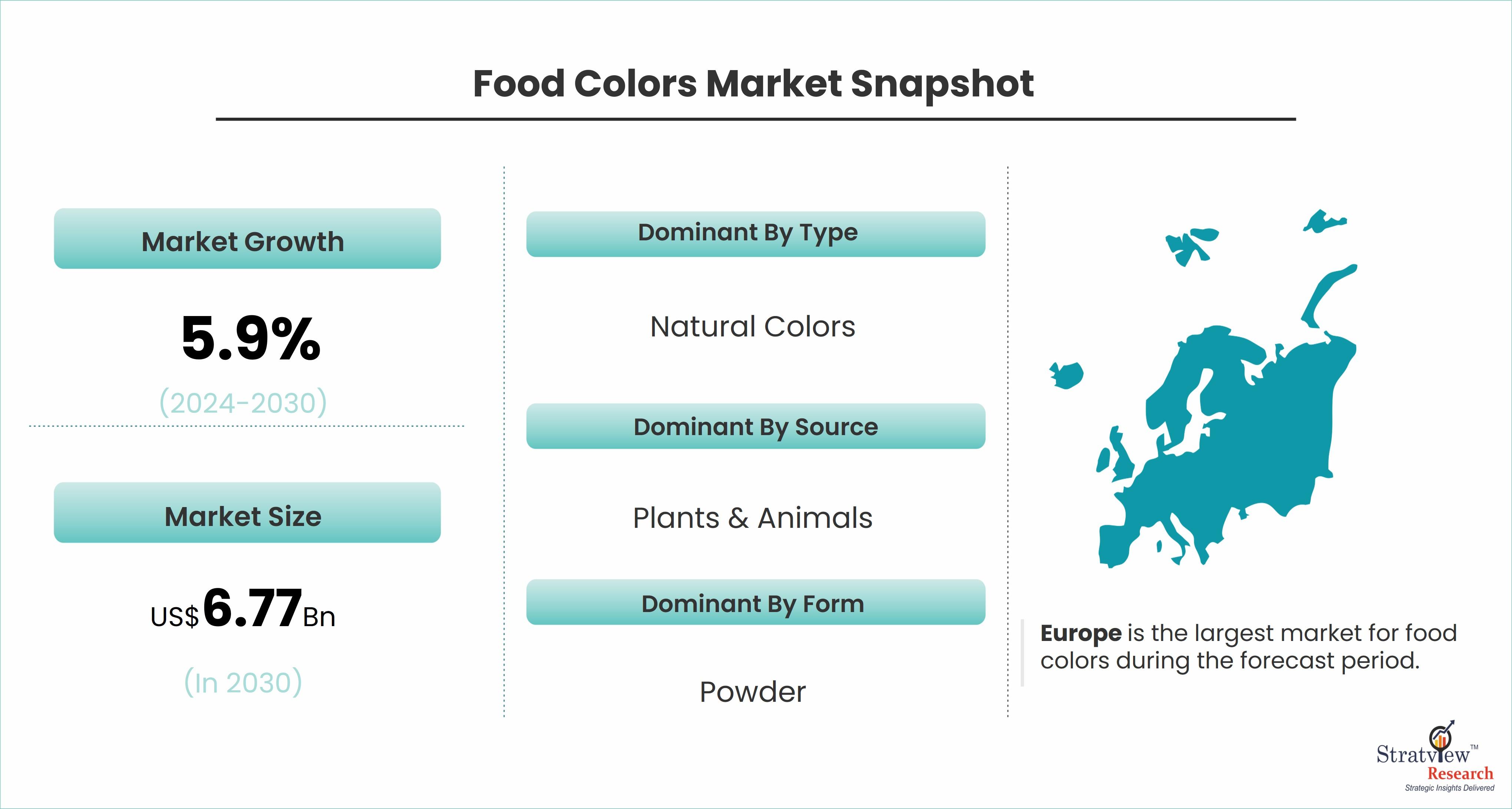Key Drivers of the Food Colors Market

The global food colors market is experiencing notable growth, driven by several key factors that reflect evolving consumer preferences and regulatory developments. Food colors play a vital role in enhancing the visual appeal of food and beverages, influencing consumer choices, and ultimately impacting the overall market dynamics. This article delves into the primary drivers fueling the expansion of the food colors market.
According to Stratview Research, the food colors market was estimated at USD 4.5 billion in 2023 and is likely to grow at a CAGR of 5.9% during 2024-2030 to reach USD 6.77 billion in 2030.
1. Shift Toward Natural and Clean Label Ingredients
A significant driver of the food colors market is the increasing demand for natural ingredients, fueled by the clean label movement. Consumers are becoming more health-conscious and are scrutinizing product labels more closely. As a result, they are seeking food products that contain fewer artificial additives and preservatives. Natural food colors derived from fruits, vegetables, herbs, and other plant-based sources are increasingly preferred over synthetic dyes. This shift is especially pronounced in developed markets like North America and Europe, where clean label products are rapidly gaining traction.
Manufacturers are responding to this trend by reformulating their products to include natural food colors, such as beet juice, turmeric, spirulina, and paprika. These natural alternatives not only meet consumer demands for healthier options but also allow brands to capitalize on the growing market for organic and non-GMO products.
2. Rising Demand for Processed and Packaged Foods
The global increase in demand for processed and packaged foods is another key driver of the food colors market. With urbanization, changing lifestyles, and the growing prevalence of on-the-go consumption, more consumers are opting for ready-to-eat meals, snacks, and beverages. The visual appeal of these products plays a crucial role in attracting consumers, and food colors are essential in enhancing the appearance of these items.
Food and beverage companies are increasingly investing in visually appealing products to differentiate themselves in a highly competitive market. This has led to a surge in the use of both natural and synthetic food colors, particularly in the confectionery, dairy, bakery, and beverage sectors.
3. Health and Wellness Trends
As health and wellness trends gain momentum worldwide, food colors that align with these trends are becoming increasingly popular. Consumers are looking for food products that not only look good but also offer nutritional benefits. Natural food colors are perceived as healthier alternatives to synthetic dyes, as they are often associated with the ingredients' inherent nutrients. For example, turmeric provides color while also offering anti-inflammatory properties, and spirulina adds vibrant color along with its health benefits.
The growing focus on wellness is encouraging manufacturers to innovate with food colors that are not only visually appealing but also contribute to overall health, further driving market growth.
4. Regulatory Support and Compliance
Regulatory support for natural food colors is playing a pivotal role in market expansion. Regulatory bodies such as the European Food Safety Authority (EFSA) and the U.S. Food and Drug Administration (FDA) are tightening regulations on synthetic additives, prompting manufacturers to explore safer, natural alternatives. In addition, certifications such as USDA Organic and Non-GMO Project Verified are becoming important for brands looking to appeal to health-conscious consumers.
Conclusion
The food colors market is experiencing robust growth, driven by the rising demand for natural and clean label ingredients, the expansion of processed and packaged foods, and the increasing influence of health and wellness trends. As consumer preferences continue to evolve and regulations push for safer food additives, the food colors market is poised for further expansion. Natural food colors, in particular, are expected to dominate future market trends as manufacturers align with consumer demands for healthier, more transparent products.
- Questions and Answers
- Opinion
- Motivational and Inspiring Story
- Technology
- Live and Let live
- Focus
- Geopolitics
- Military-Arms/Equipment
- Безопасность
- Economy
- Beasts of Nations
- Machine Tools-The “Mother Industry”
- Art
- Causes
- Crafts
- Dance
- Drinks
- Film/Movie
- Fitness
- Food
- Игры
- Gardening
- Health
- Главная
- Literature
- Music
- Networking
- Другое
- Party
- Religion
- Shopping
- Sports
- Theater
- Health and Wellness
- News
- Culture

